Nearly 300 artifacts dating back to centuries ago are on display at the Vietnam National Museum of History from April through July. These are regarded as the most important discovery of Vietnam’s archeology within the last century.
The event, themed “Vietnam’s archaeological treasures”, aims to introduce achievements of Vietnamese archaeologists in the past six decades as well as the archaeological achievements in cooperation between Vietnam and Germany.
The exhibition, which is held from April to the end of July, takes visitors back to three different periods in history: the Prehistoric Age, the Metal Age and the Historical Age.
The artifacts are arranged from the prehistoric period to the feudal period in Vietnam. The prehistoric artifacts include tools, stone jewelry and pottery items discovered at different sites across the country.

The exhibition “Vietnam’s archaeological treasures” is held at the National Museum of History in Hanoi from April to July.
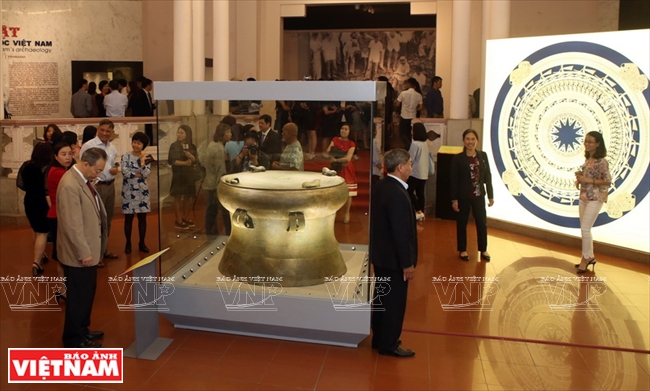
A corner of the exhibition.

A gold-star bronze drum of the Dong Son culture dating back 2,000 years discovered in Sao Vang (Gold Star) township,
Tho Xuan, Thanh Hoa province.
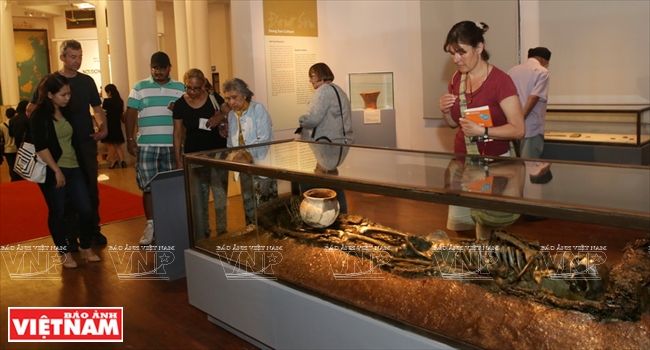
A coffin in an ancient tomb discovered at Chau Can archaeological site in Ha Tay province.
Many brass items, including an axe, spear and mirror, and bamboo, wooden and ceramic items were found in the tomb.
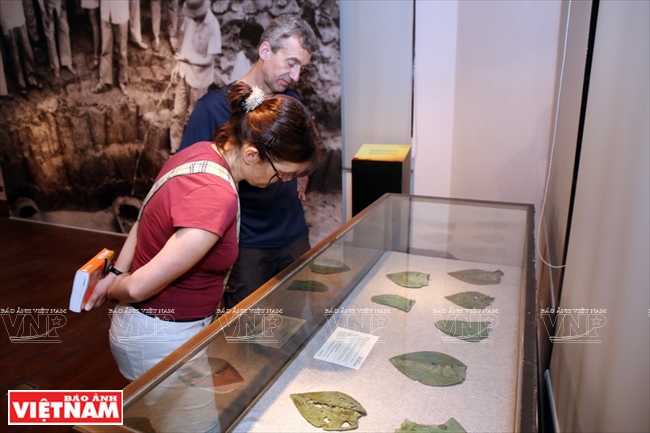
Brass plowshares of the Dong Son culture dating back 2,500-2,000 years found in Co Loa, Dong Anh, Hanoi.
The tool shows the high-level of metallurgy and farming of Dong Son people.

A Phu Phuong bronze drum of the Dong Son culture discovered in Phu Phuong commune, Ba Vi, Hanoi in 1973.
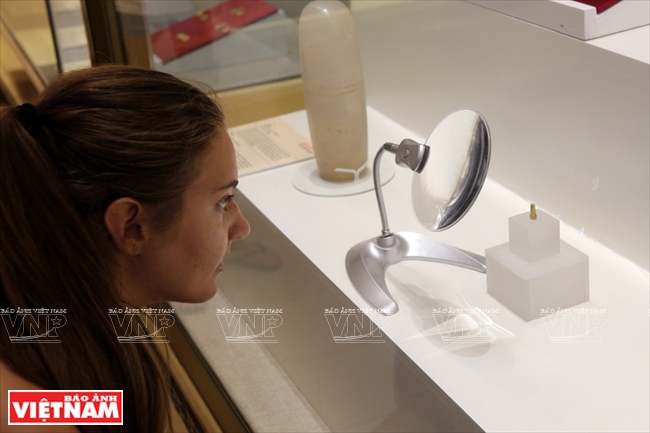
Looking through a magnifying glass dating to the 8th or 9th century, discovered in Cat Tien, Lam Dong province.
|
The Metal Age space at the exhibition showcases outstanding archaeological items which feature the Dong Son culture in the north, the Sa Huynh culture in the central region and Dong Nai culture in the south. Most of the displayed artifacts were made from iron, stone, glass, wood and bronze. They include stone bracelets and earrings, and bead necklaces of the Phung Nguyen and Dong Dau cultures; gold-star bronze drums of Thanh Hoa, bronze bells of the Dong Son culture; and bronze axes, arrows, hoes, and plowshares. Some of them were found in tombs such as terracotta stoves discovered in the northern provinces of Bac Ninh and Thanh Hoa.
The artifacts of the Sa Huynh culture which lasted from the post Stone Age to the beginning of the Iron Age (dating back around 3,000-2,000 years) include glass bead necklaces discovered in Sa Huynh, Quang Ngai province; burial jars excavated in Dong Cuom, Binh Dinh province; and ceramic lamps and glass bead necklaces.
Objects of the Dong Nai culture on display are stone, agate and glass bracelets and earrings found in Giong Ca Vo site in 1994. Vietnam’s first gold items, which are necklaces and rings, terracotta pots and tripods and artifacts discovered at Long Son site in Ba Ria-Vung Tau province and Go O Chua in Long An province.
The exhibition has a space for historical archaeological treasures from the first ten centuries and stone sculptures from the Champa Kingdom (192-1471) and My Son World Cultural Heritage, gold rings and decorative gold sheets of Oc Eo Culture of the Phu Nam kingdom between the 3rd and 6th centuries.
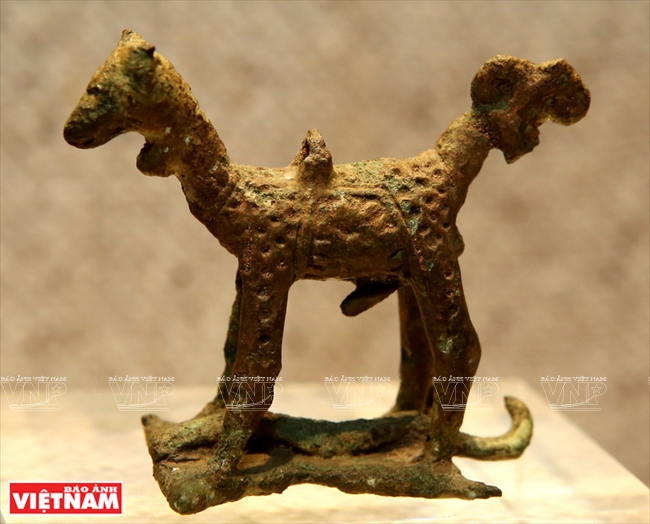
A bronze animal statue of the Dong Nai culture, dating back around 2,500 years, excavated in Doc Chua, Tan Uyen,
Binh Duong province in 1977.
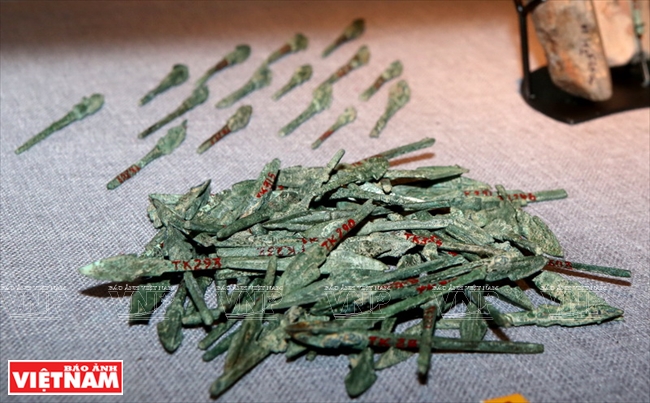
Bronze and stone arrows of the Dong Son culture, found in Co Loa, Dong Anh, Hanoi.
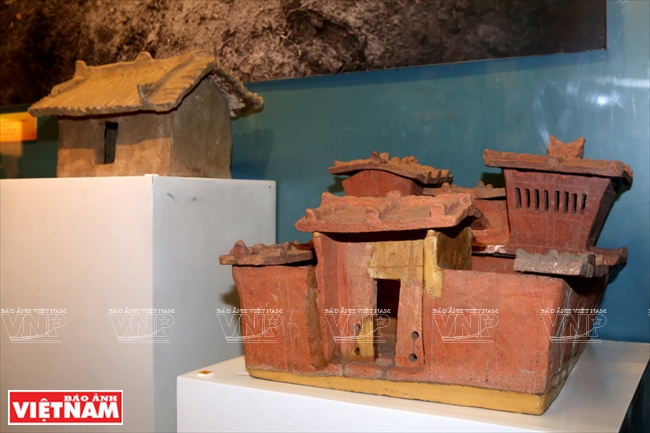
A terracotta house dating back to the 1st-3rd century, which was found in brick tombs in the first centuries.
The item was discovered in Cau Giay, Hanoi in 1936.
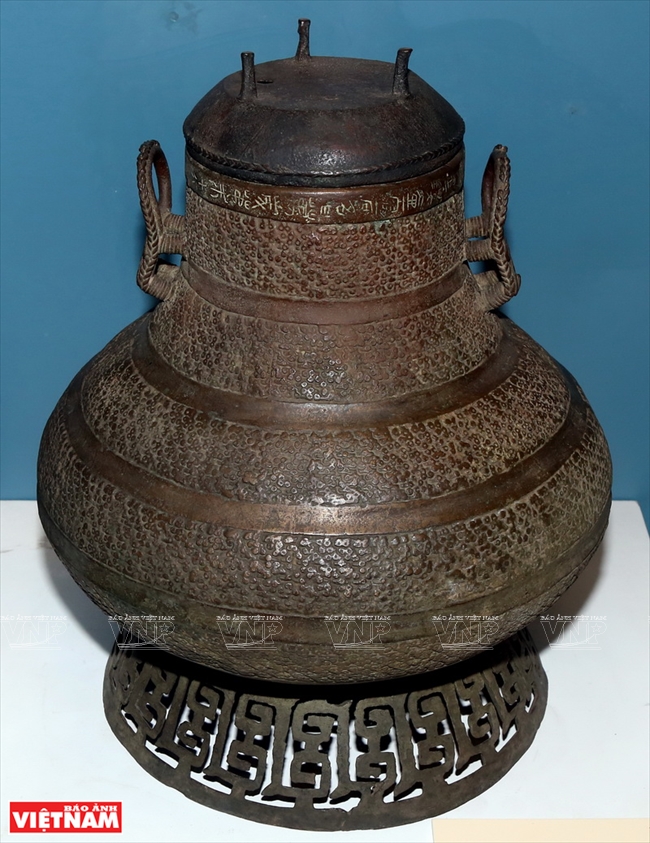
A bronze jar dating back to the 1st-3rd century found in Phu Xuyen, Ha Tay, which proves the conservation of
Dong Son culture till the first centuries.
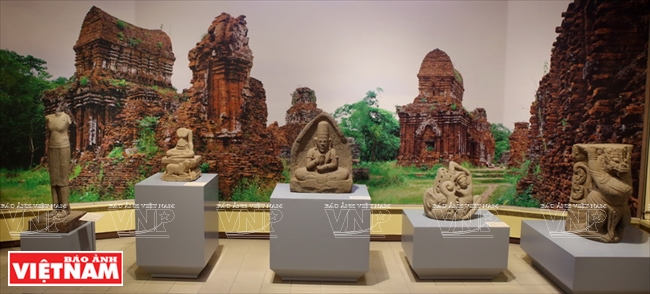
Stone statues of the Champa culture.
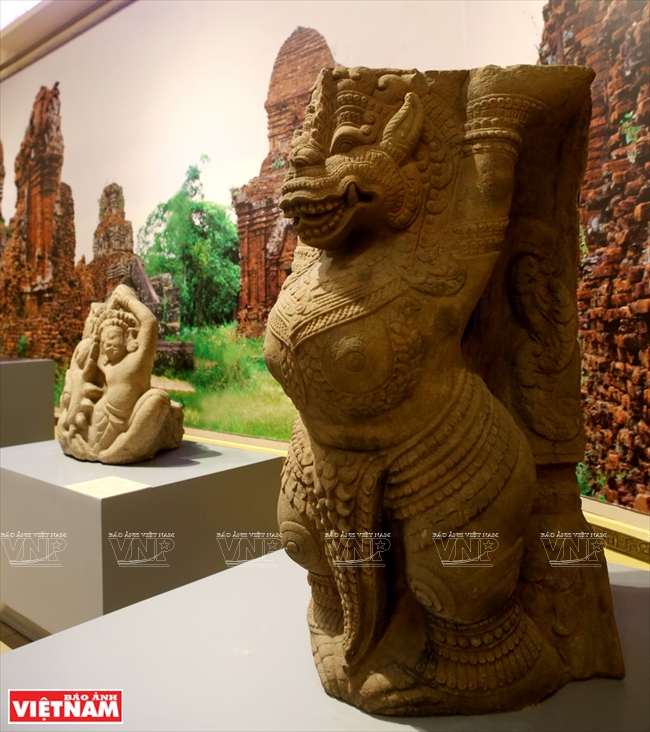
A sandstone lion statue of the Champa culture, 12th or 13th century, excavated in Thap Mam, Binh Dinh province.
Lion is a symbol of power and royalty in Champa culture. Lion statues are set at the foot of the temples.
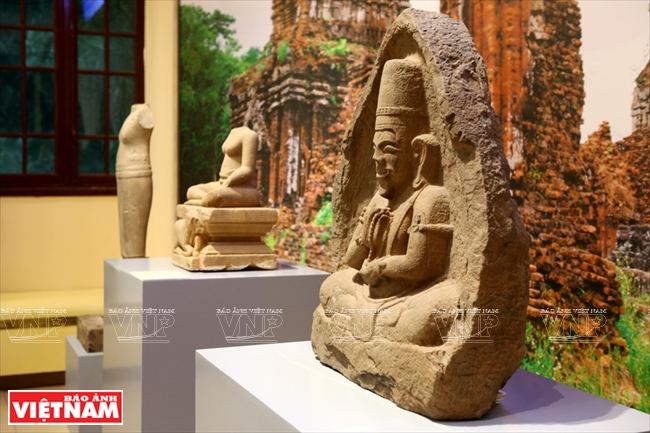
Sandstone Shiva yogi statue of the Champa culture, 12th or 13th century, excavated in 2011 in Thap Mam,
Binh Dinh province.

Quartz linga, 8th or 9th century, found in Cat Tien, Lam Dong province. The small-sized gold and quartz lingas
found in Cat Tien are rare. Linga is an offering used in rituals at temples.
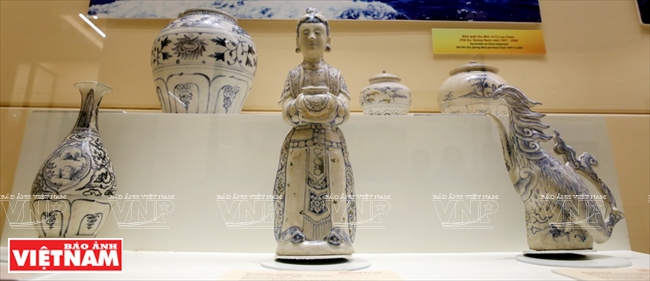
From left to right, a vase, an aristocratic female statue, a phoenix-shaped pot from the 15th century,
excavated on Cham island, Hoi An, Quang Nam province from 1997-2000.
|
The section displaying items in the feudal period introduces traces of ancient citadels such as decorative tiles of the Hoa Lu ancient capital in Ninh Binh province, bricks, and objects found in two world heritages - the citadel of the Ho dynasty in Thanh Hoa province and the imperial citadel of Thang Long in Hanoi.
The archeological collection was displayed at three German museums from October 2016 to February 2018 as part of a program promoting Vietnamese culture, history and people in the European country./.
By Cong Dat – Tran Thanh Giang